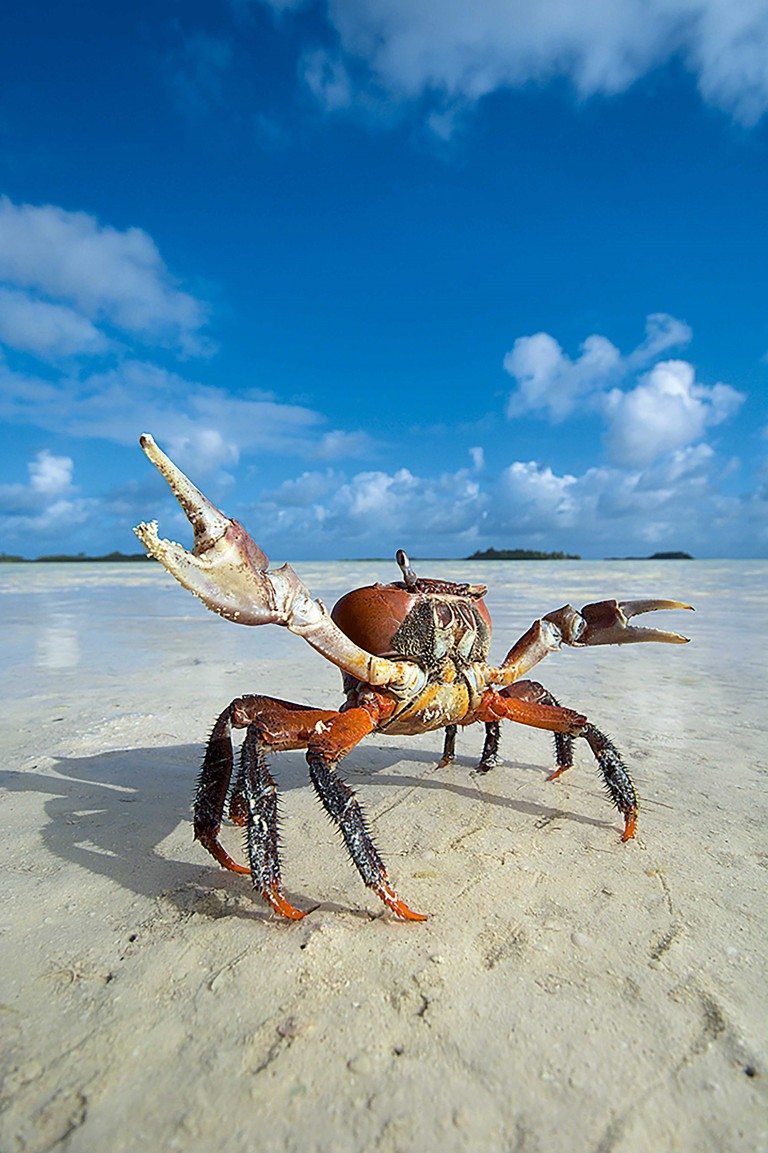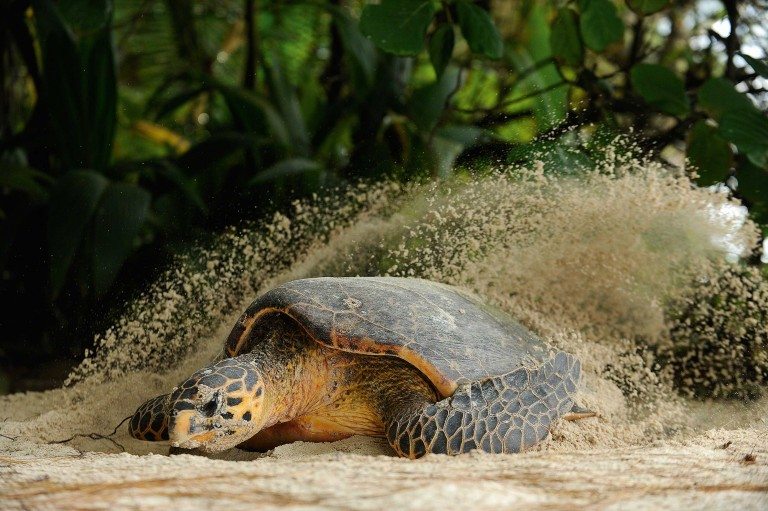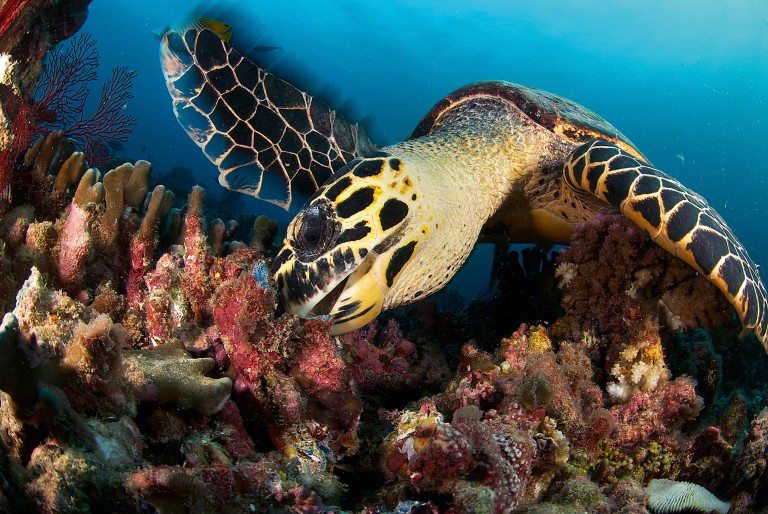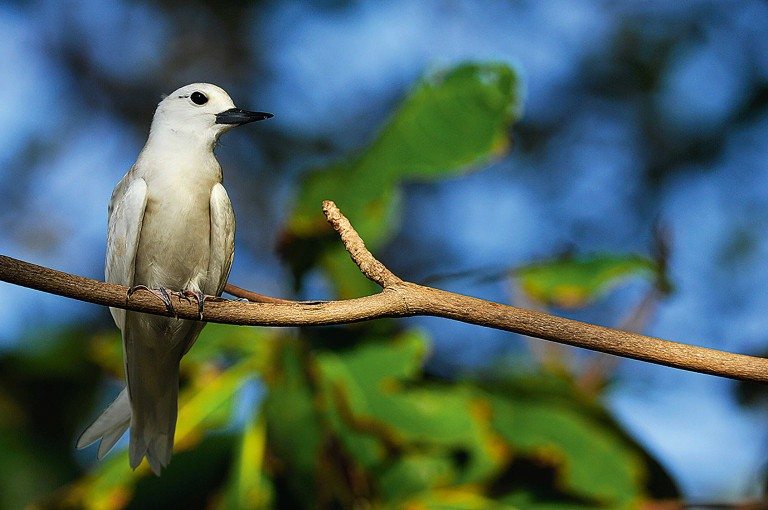D’Arros and St Joseph
05° 24’ 58.0” S, 53° 17’ 56.1” E
Scientific director of SOSF D’Arros Research Centre Rainer von Brandis relays some of the knowledge gleaned on the local marine and terrestrial environments of these remote islands in the Seychelles’ Amirantes Group.
© LAND INFO Worldwide Mapping, LLC, includes material Copyright © DigitalGlobe - Longmont, Colorado. All rights reserved
D’Arros Island and St Joseph Atoll are situated in the remote outer islands of the Seychelles. They form part of a small chain of islands that comprise the Amirantes Group, named for the bank on which they are situated. Mahé and the other inner islands of Seychelles lie 250 kilometres northeast of the Amirantes while Zanzibar is 1,400 kilometres due west. Because of their inaccessibility, lack of fresh water and infertile soils, the outer islands have long been regarded unsuitable for permanent habitation. Nevertheless, over the past two centuries small communities have existed transiently on some of the islands to grow coconuts, collect guano and catch fish. Today, conservation and tourism are the main activities on the outer islands.
Although D’Arros Island and St Joseph Atoll are separated by a one-kilometre wide and 70-metre deep channel, they are considered a single ecological unit as their ecosystems are inextricably linked. D’Arros Island and the 16 islands that comprise the St Joseph Atoll are relatively young (circa 5,000 years) sand cays.
D’Arros Island is oval shaped and about two kilometres at its widest axis, which means you can walk around its uninterrupted sandy beach in less than two hours. St Joseph Atoll consists of a circle of 16 islands that have a combined landmass just less than D’Arros. These islands are situated on a shallow reef flat that encircles a central lagoon of 3.5 kilometres in length and 3 metres in average depth. During the low tide, marine organisms are trapped in the lagoon because the reef flat becomes entirely exposed. As the tide rises again, water spills back over the reef flat to eventually lap against the beach crests of the islands. Most of the rain falls during the northwest monsoon, between December and March. For the remainder of the year the island is subjected to moderate southeasterly winds and relatively dry weather. Air temperature varies between 25 and 35°C while the sea cools to 24°C in winter and warms to 31°C in summer.
SOSF D’Arros Research Centre
A biological field station based on D’Arros Island in the Amirantes Group, Seychelles, the SOSF D’Arros Research Centre (SOSF–DRC) conducts research on the pristine D’Arros Island and St Joseph Atoll and the waters around them. In recognition of the islands’ outstanding natural values, the research centre was established in 2004 and tasked with becoming a regional centre of excellence for marine and tropical island conservation. Initially, collaborations were established with local and international institutions and baseline ecological surveys were conducted in the various habitats. Over the ensuing years an increasing number of research projects and monitoring programmes were implemented in response to questions raised by the baseline surveys and by visiting scientists. More recently, the centre expanded its activities to include ecosystem restoration and environmental education.
Today the SOSF–DRC boasts the longest-running nesting turtle monitoring programme in the Amirantes and the most detailed and technically advanced coral reef monitoring programme in the Seychelles, making use of techniques such as stereo-video photogrammetry, photoquadrats, remote underwater video systems (BRUVs) and visual census. The research centre also maintains the largest acoustic receiver array in the Seychelles, which monitors the local movements of sharks, manta rays, stingrays, turtles and fish. Since its inception in 2004, the centre has initiated no fewer than 36 research projects in collaboration with more than 26 conservation institutions. The projects have resulted in 10 peer-reviewed scientific papers, one PhD and one MSc dissertation, five conference presentations and 27 scientific reports.




